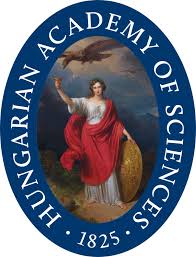Mongolia, endowed with abundant natural resources, faces a critical challenge in reducing its reliance on the mining sector and achieving economic diversification. This study aims to identify the potential for economic diversification by developing the non-mining processing industry. To this end, a Revealed Comparative Advantage (RCA) analysis and value chain mapping were employed. The RCA results highlight the importance of livestock-derived products and recognise the livestock sector as having the best potential for achieving economic diversification. Consequently, the value chain of livestock-derived products was mapped, and key challenges at each stage were identified. The study provides actionable recommendations for developing...
Read moreEditor-in-Chief:
Recent Articles
The paper estimates the firm level impact of the Common Agricultural Policy (CAP) investment subsidies on gross value added, profits, employment, and productivity of farms in Slovakia, and evaluates the effectiveness of support provided through the Rural Development Programme. We employ a Propensity Score Matching Difference-in-Differences econometric approach on a database of commercial farms for the period 2006-2015. The results of this paper show that the farm investment support stimulated growth of gross value added, farm profits, and employment in the agricultural sector, while it reduced labour productivity. Investment support helped to maintain rural jobs, which occurred partly at the...
Read moreThis study investigates the classification of the family farmers’ perceptions of success, based on characteristics and resources. The empirical analysis was undertaken on primary data collected via a questionnaire completed by family farmers in Finland. The most important variables in the classification are identified using the C5.0 decision tree algorithm. The algorithm performs with an approximately 16% error rate. In the classification of family farmers’ perceptions of success, farm characteristics are of minor importance, whereas the most important variables relate to resources and skills. The most important variables classifying perceptions of success are skills for exploiting opportunities, funding opportunities, and...
Read moreClimate change leads to various impacts, including reduced production, lower crop yields, land degradation, soil erosion, and overall, food insecurity. It is projected that by 2080, between 5 million and 170 million people could encounter serious food shortages. Currently, approximately 5 million people are experiencing inadequate access to food in Central Asia. This study investigates the impact of climate change on food security in Central Asia by using panel data analysis for five Central Asian countries between 2000 and 2020. The findings indicate that weather shocks negatively affect food security dimensions. Based on the findings, the authors recommend improving education...
Read moreThis study explores the link between trade and sustainability, focusing on Sanitary and Phytosanitary (SPS) measures within the WTO framework. It highlights the importance of Specific Trade Concerns (STCs) as a dispute management tool and their implications for sustainability. Analysing three case studies – EU-China (African Swine Fever), EU-India (Methyl Bromide fumigation), and Senegal-EU (mango exports) – the paper identifies divergent, negotiable trade-offs, and cooperative behaviours among trading partners. The study applies the Theory of Change (ToC) framework to the three STCs to assess the effectiveness of linking trade with sustainability goals. Findings reveal that sustainability considerations are critical for...
Read moreVietnam has been one of the three largest exporting countries in the global rice market in the recent decades. This study conducts an in-depth analysis of the impact of climate change on rice production in Vietnam from 2002 to 2022, focusing on key climatic variables such as temperature, rainfall, sunshine, and humidity. Located in the tropical and subtropical monsoon climate, Vietnam’s agricultural sector is acutely vulnerable to the growing challenges posed by climate variability. Employing robust empirical techniques, the research reveals significant correlations between climatic factors and rice yields. The findings demonstrate that rising maximum temperatures contribute positively to rice...
Read moreThis study aims to examine the economic impacts of phasing out enriched cages in Hungarian table egg production. An online questionnaire survey was conducted among 42 enriched cage egg producers and in-depth interviews were carried out with barn and aviary egg producers, as well as a company specialised in designing and implementing housing systems for laying hens, using economic and physical efficiency data for the year 2021 from egg producers. Economic situation was examined via a simulation model, which was based on on deterministic principles. The results indicate that aviary and barn housing systems exhibit lower physical efficiency and weaker...
Read more


